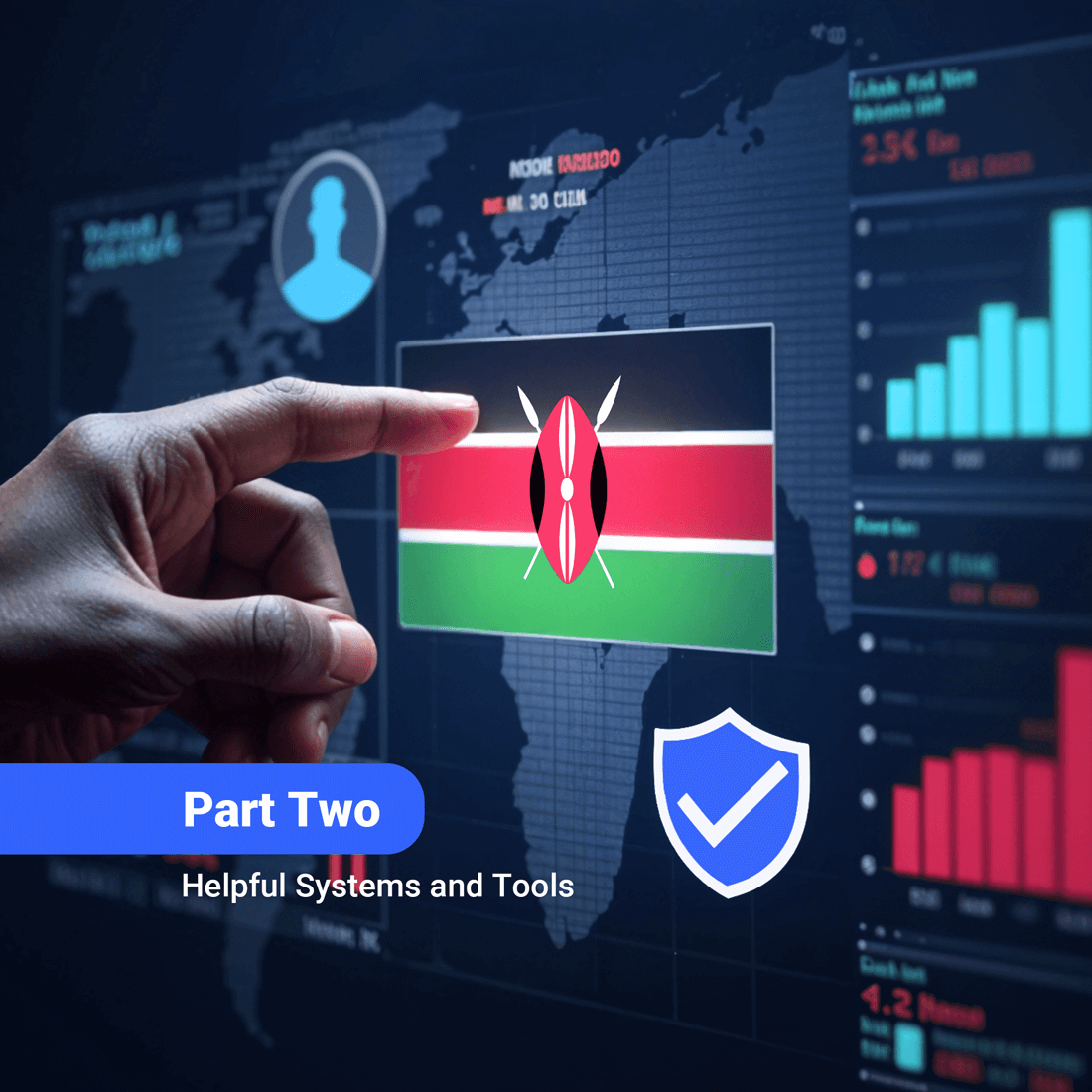Rule-Based Transaction Monitoring Systems
While many industries are adopting AI and machine learning for fraud detection, in Kenya, an equally important approach is rule-based transaction monitoring. These systems automatically flag suspicious insurance transactions or claims based on predefined rules and red-flag indicators, rather than complex predictive models. Rule-based systems are transparent and grounded in domain expertise, encoding known fraud patterns or thresholds from investigators’ experience. In insurance, they can scrutinise claims in real time and raise alerts for cases meeting certain risk criteria.
For example, Kenyan short-term insurers might flag claims made soon after policy inception — a common fraud tactic — or multiple claims in a short span. Rules can also spot inconsistencies, like conflicting information across documents, or a motor accident claim where repair costs just undercut the threshold that would trigger deeper scrutiny. Another rule is to cross-check identities or assets across industry databases; if the same vehicle or ID appears in claims at multiple companies, it’s flagged. Kenya’s Integrated Motor Insurance Database System (IMIDS) already serves this purpose, preventing an estimated Ksh 40 million in fraudulent motor claims in its first year. Rules can also detect known patterns, like a travel insurance claim for pricey electronics where receipts are dated just after the trip — suggesting they may have been fabricated post-loss.
Kenya’s Integrated Motor Insurance Database System (IMIDS) already serves this purpose, preventing an estimated Ksh 40 million in fraudulent motor claims in its first year.
Importantly, rule-based monitoring is relatively easy to implement. Insurers can embed rules in claims software or use add-on fraud modules preloaded with common red flags. Unlike machine learning, rule-based systems don’t need large historical datasets — an advantage for Kenyan insurers with limited data or IT resources. They also provide clear reasons for flagging, helping analysts investigate efficiently. In practice, combining automated flags with human review works best: the system filters high volumes and highlights suspicious cases, easing investigators’ workloads. However, rule sets must be updated continually as fraud tactics evolve. Industry collaboration, such as through the Association of Kenya Insurers, helps share insights on emerging scams so rules stay effective.
In summary, rule-based fraud detection offers a practical, explainable defence suited to Kenya’s needs, leveraging local knowledge and existing data. Early successes like IMIDS show how simple data-sharing and rule logic can cut fraud significantly. By catching fraud early, insurers save costs, and honest claimants benefit from faster approvals.
Identity Verification and Liveness Detection Technologies
A crucial set of tools in combating insurance fraud revolves around verifying identity. Many fraud schemes exploit weaknesses in confirming that the person making a claim or buying a policy is genuinely who they claim to be. In Kenya, where the national ID card is the primary identifier, fraudsters often use stolen or counterfeit IDs, assume false identities, or make unauthorised claims. Regional studies show that relying solely on traditional ID documents is a major issue, with national ID-based fraud making up around 80% of identity fraud cases in Africa’s digital transactions. This highlights the need for stronger Know Your Customer (KYC) and claimant identity checks to prevent imposters and fraudulent claims.
Regional studies show that relying solely on traditional ID documents is a major issue, with national ID-based fraud making up around 80% of identity fraud cases in Africa’s digital transactions.
Modern identity verification technologies offer practical solutions for Kenyan insurers. A key feature is digital ID capture and extraction. Rather than depending on easily altered photocopies, insurers can use apps or web portals where customers upload a photo of their ID. Optical Character Recognition (OCR) and document authentication then extract details and verify the ID’s security features or compare them against templates to spot forgeries. This not only speeds up identification but also screens for fraud, flagging cases like an ID number not found in government records or a photo mismatch.
Passive liveness detection is another powerful tool. It checks that a submitted selfie or facial image comes from a live person, not a static photo, replay or deepfake. Working silently in the background, it analyses subtle cues like skin texture, light reflection and depth, without extra prompts or user interaction. This frictionless approach suits the Kenyan market well, given the range of devices and connectivity levels. It allows insurers to verify identity remotely without disrupting the mobile-first journeys where added steps could lead to drop-offs. For instance, when a policyholder submits a motor or travel claim via an app, passive liveness confirms they are physically present, preventing impersonation with stolen documents.
Passive liveness is most effective when combined with other tools like ID capture, OCR, and facial matching. When a customer uploads their ID and a selfie, the system can extract data, check the ID’s authenticity, match the face, and confirm the selfie was live. This blocks many identity fraud attempts, including stolen or fake IDs, synthetic identities, and unauthorised access to policyholder accounts.
Embedding passive liveness checks at key points — such as onboarding, high-value claims, or beneficiary changes — helps insurers cut impersonation fraud while keeping the experience smooth. As fraudsters turn to sophisticated methods like deepfakes, passive liveness ensures insurers stay ahead.
These verification measures are especially relevant for digital claims and online policy sales, which are growing in Kenya. For example, a travel insurance claim submitted online might trigger an OTP to confirm phone ownership, followed by a liveness selfie to verify the claimant before processing. Similarly, at policy issuance, checking an ID against official databases stops false identities that could later be used for fraud or money laundering. Several tech providers now enable real-time ID checks against government records and biometric matching with minimal friction. By adopting these, Kenyan insurers not only deter fraud but also comply with anti-fraud and anti-money laundering rules requiring robust customer verification.
It’s essential that these tools remain user-friendly. The aim is to catch fraudsters, not inconvenience genuine customers. Many solutions balance security and simplicity — a liveness selfie takes just seconds with in-app guidance, and ID capture is as simple as taking a photo. Education is key; by explaining how these steps protect customers’ identities, insurers can encourage adoption. Given Kenya’s high mobile use and familiarity with mobile money, customers are likely to adapt quickly to biometric checks once they understand the security benefits. Over time, these measures can greatly cut impersonation scams and false claims, as fraudsters would face multiple hurdles, with passive liveness quietly confirming a real person is present, making spoofing very difficult.

Document Fraud Screening and Other Practical Controls
In many insurance fraud cases, documents tell the story – or rather, a falsified story. Fraudsters often rely on forged or manipulated documents to back up their bogus claims – think of fake repair invoices, altered medical reports, counterfeit police abstracts for accidents, or receipts that have been doctored to inflate claim amounts. Detecting document fraud is thus a core part of a robust anti-fraud strategy. Traditionally, Kenyan insurers have used manual verification – claims officers painstakingly inspecting documents for irregularities or contacting hospitals, garages, or police stations to confirm if a document is genuine. This manual approach, however, is slow, costly, and prone to human error. With the sheer volume of claims, a few fraudulent papers can slip through unchecked, especially if staff are overburdened or not trained in forensic document analysis.
Automating document fraud screening can greatly enhance both efficiency and accuracy. There are software tools that can scan submitted documents (PDFs, images) and perform a variety of checks. For example, they might analyse the metadata of a photo to see if the timestamp or GPS data is inconsistent with the claimed event, or use image forensics to detect if a document image has been edited or if signatures/stamps have been digitally transplanted. Textual analysis algorithms – not necessarily heavy AI – even rule-based pattern matching – can flag suspicious language or formatting, such as identical wording across multiple claims from supposedly different claimants, or an official letter that lacks expected reference numbers. In cases of duplicate claims, an automated system can compare new claim documents with those from past claims on file – if the same repair receipt shows up twice for two different accidents, that’s an obvious red flag. Implementing these kinds of automated cross-checks helped some insurers internationally to catch patterns that a human might miss, by sifting through data at scale. In Kenya, where multiple insurers have fallen victim to similar document scams, adopting such tools industry-wide could drastically reduce repeat fraud incidents.
Another practical control is to integrate fraud alerts into the claims workflow. For instance, if a certain service provider (say, a particular garage or clinic) appears frequently in claims and has been associated with fraudulent bills before, the system can automatically mark any new claim involving that provider for secondary review. This kind of rule-based alert – possibly supported by an internal blacklist or an industry fraud registry – targets collusion schemes where a network of individuals repeatedly use the same provider to create fake losses. The Kenyan industry has recognised the need for such data sharing – there have been recommendations to establish index systems or databases of fraudulent activities and perpetrators accessible to all insurers. With proper data protection safeguards, insurers could collectively maintain records of known fraud cases, which future claims can be checked against – for example, an ID flagged for past fraud, or a vehicle that was involved in a suspicious claim before.
In addition to high-tech solutions, strengthening basic process controls can go a long way in fraud prevention:Claims Validation Procedures
Insurers should continue with on-ground validation for high-risk claims – e.g. site visits for fire claims, thorough accident investigations for large motor accidents, and requiring original documents where feasible to inspect for authenticity. While this may extend processing time for a tiny subset of claims, it is justified for big losses or if multiple red flags are present.
Multi-Person Approval
Implementing dual approval for large claims or for claim settlements that have any irregular indicators adds oversight. If a fraudulent claim has managed to get through initial screening, a second pair of eyes in management might spot something amiss before payment goes out.
Employee and Agent Screening
As noted earlier, some fraud involves internal players or agents. Kenyan insurers can tighten controls by vetting agents – ensuring they are licensed and have no fraud history – and monitoring their business for anomalies, like an agent whose clients have unusually frequent claims. Similarly, establishing robust whistleblower channels and an anti-fraud code of conduct internally helps create a culture where staff are vigilant and unafraid to report suspected wrongdoing.
Customer Education
Fraud prevention isn’t solely an internal matter; educating customers helps too. Clear communication that fraudulent claims are criminal and will be prosecuted can deter opportunistic policyholders. Some Kenyan insurers publish tips on avoiding scams and encourage the public to report fraud. An informed customer base is less likely to be duped by fraudsters – for instance, there have been scams where fake insurance agents issue bogus covers – if customers verify licenses and pay premiums directly to company accounts as advised, such scams can be curtailed.
Conclusion
By adopting a blend of rule-based monitoring, modern identity verification, and automated document checks, Kenyan insurers can drastically cut down on fraudulent claims while speeding up the process for honest customers. In our final piece, we’ll explore how these anti-fraud measures can be effectively implemented within Kenya’s insurance market, and how they translate into operational and financial benefits. Don’t miss it — and if your business is ready to strengthen its fraud defences, get in touch with us for a tailored consultation or discover our FRM product offerings.

